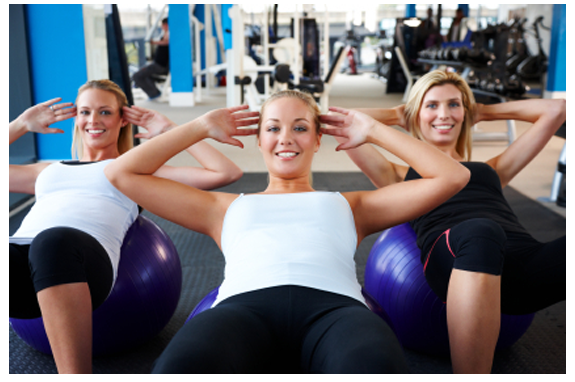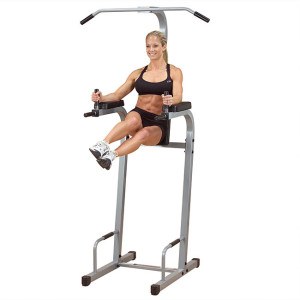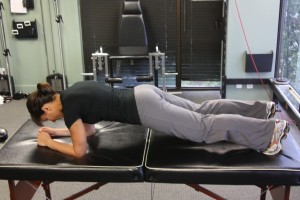
The question for today comes from a reader who wants to know about ab toning:
Hi Doug,
I don’t believe I have ever seen a discussion of the vertical (flexed/extended) leg raise for ab toning. I have spinal stenosis and find it and planks the most back friendly for core strength. Your thoughts?
Thanks,
Bob (not his real name)
Thanks Bob for your question.
Some background first.
Spinal Stenosis
I know this condition well because I’ve worked with hundreds of people with the diagnosis.
And I have it.
The word “stenosis” means closing in. There are two main types of stenosis of the spine. One is “spinal stenosis” where the tissues in the spinal canal are compressed (the spinal cord) and the other is “foraminal stenosis” where the nerves that exit the spine via the neural foramen are squeezed.
Sometimes people will use “spinal stenosis” when they actually mean “foraminal stenosis” but either way, the end result is that the soft tissues of the spine do not have sufficient room to tolerate much of any changes in those tissues – like swelling.
Spinal and/or foraminal stenosis (they often exist together), in most cases, results from a cascade of events that begins with a loss of intervertebral disc height. When the disc height decreases, the vertebral bodies can slide forward and back a very small amount. This small shearing force causes a collision of the facet joints. In response, the bone remodels and grows in size, the joint capsule swells and the result is compression of the nervous tissues.
Now, you should know that Conventional Wisdom maintains that stenosis is a normal aging event.
Yes, it does show up in people as they age but does everyone who ages get stenosis?
No. The cause of spinal or forminal stenosis is far more complex than just aging. It’s part disuse, part misuse, and part genetics (and genetics is likely the least of the problem) – something to discuss on another day but the cause is not because you’re old or aging.
Ab Toning
When it comes to exercise, the first question to ask is,”Why?” Why am I exercising at all and what am I hoping to achieve?
People exercise for a number of reasons and for many, changing their body image is near the top of the list.
If you’re a regular reader of my blog, you probably know my opinion on exercise and training. I believe exercise serves you best when you have a functional goal in mind as opposed to a body image goal. It’s a philosophy. Your body will display certain physical characteristics based on what you do and your individual genetics.
Gymnasts have a very different appearance than marathon runners. Neither athlete trains to look a certain way. They train for performance.
And this is where things like “ab toning” comes in and other body segment or “isolation” type exercises (like your butt, your arms, your legs, etc).
“Ab toning” means increasing the resting tension level of the abdominal muscles so the abdomen feels and looks tighter. This is usually what people are after when they want a flatter belly – a more muscular, tighter, bounce-a-nickel-off-your-abdomen appearance.
Of course, you don’t actually achieve a flatter, tighter belly primarily from a specific exercise. That’s a myth. A flatter belly is 70% from your diet and then your activity so it’s the reflection of your choices and lifestyle.
Yes, the drills you mentioned can increase the muscle tone. But, you also have to ask, “What’s the inherent risk of the exercise?” After all, there are a lot of exercises that can increase abdominal muscle tone so the ideal situation is to choose exercises that have a high benefit with a relatively low risk of injury.
All exercise carries risk. They key is knowing what the risks are and how to minimize those risks.
Hanging Leg Raise
This exercise creates substantial pressure on the intervertebral discs. And keeping in mind that with stenosis you already have a  situation where the spinal tissues don’t have sufficient room, increased spinal pressure can reduce the space and raise the potential for soft tissue swelling.
situation where the spinal tissues don’t have sufficient room, increased spinal pressure can reduce the space and raise the potential for soft tissue swelling.
In your case Bob, apparently your spine can withstand this pressure…for now. Remember that spinal problems do not happen overnight. They may suddenly appear, seemingly out of nowhere, but the problem evolves. My advice would be to choose another drill (and I’ll share that with you below).
Plank
This drill is spine friendly as long as you can hold the spine in a stable, relatively straight position. Some people need to perform the drill on the forearms and knees rather than the typical forearms and toes but object because it seems or feels silly or too easy or whatever their ego is jabbering at them.
or feels silly or too easy or whatever their ego is jabbering at them.
Ditch the ego and do what your body can do. That’s how you get better and stronger and actively age.
To increase the benefit, tighten all your muscles. Thigh, buttocks, abdomen, shoulders, everything. We call this a sizzler. The extra muscle work further protects the spine and increases the overall demand.
What to Do Instead
If the goal is increased abdominal muscle tone, one way to achieve that is to force the abdominal muscles to work reactively and at a high speed of contraction. Muscle tone increases more with eccentric contractions or with movements that create an impulse. When you increase muscle contraction speed, you increase the number of muscle fibers used, increase fatigue which then translates to increased resting tone.
So, here’s one I use often.
Speed Punch
The Speed Punch is deceptively challenging. You have to hold your body still while rapidly alternating a resisted punching motion. The great things about this drill are that it carries low risk of injury, is spine friendly, and forces the abdominal muscles to work in a highly functional manner.
Now, some people look at this exercise and think “But you’re not moving your midsection so how does that help my ab toning?”
The muscles that create a more toned mid-section are not muscles that move your body. Instead, they create compression and hold the trunk while the legs and arms move.
Bottom Line
The Hanging Leg Raise carries too much risk and too little reward to include in any exercise regimen. Instead use the Plank or Speed Punch as a way to improve your abdominal strength, endurance, and tone. And for a more comprehensive approach to the abdominal muscles and core, check out my book, Build a Rock Solid Core: Stop the Sit-Ups and Save Your Spine.



